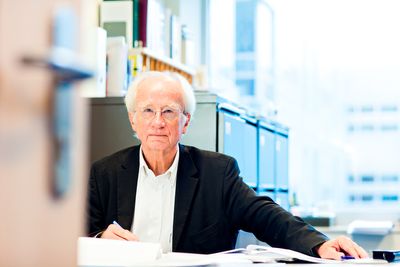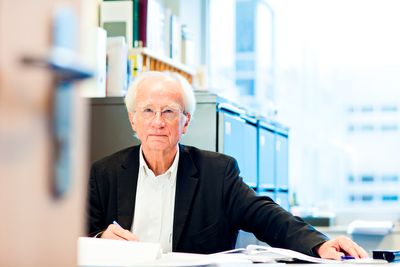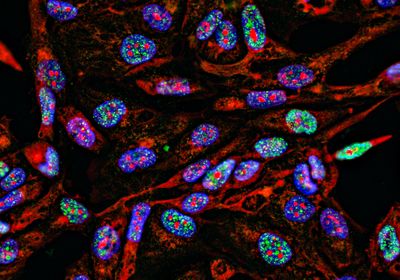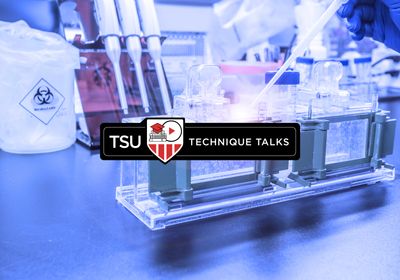ABOVE: Piet Borst received the 2023 Lasker~Koshland Special Achievement Award in Medical Science. Netherlands Cancer Institute
Today (September 21), the Lasker Foundation announced the recipients of the 2023 Lasker Awards. Sometimes referred to as “America’s Nobels,” these prestigious awards recognize fundamental biological discoveries, clinical advances, and public advocacy for science.
Piet Borst, a physician-biochemist and molecular biologist at Netherlands Cancer Institute, received the Lasker~Koshland Award for Special Achievement in Medical Science for “an exceptional 50-year career of scientific discovery, mentorship, and leadership,” the Lasker Foundation announced. In his five decades of scientific work, Borst contributed to seminal discoveries in diverse topics, including mitochondria, trypanosomes, and molecular pumps involved in multidrug resistance. Borst’s deep passion for science extended beyond his scientific research; he mentored numerous notable scientists and played an active role in advocating for basic research and scientific integrity.
Borst was at home when he received the news from Joe Goldstein, Chair of the Medical Research Awards Jury. “I am deeply honored. I think if you want to be part of an illustrious gallery, then this is certainly it. There are only outstanding people there,” he said.
Exploring mitochondria and trypanosomes
From an early age, Borst’s home was filled with discussions of scientific results and collaborators. His father was a professor of internal medicine and a clinical researcher. Following in his father’s footsteps, Borst studied medicine at the University of Amsterdam with the intent to pursue clinical research.
While waiting for his clinical internship, he stumbled upon an opportunity to conduct research in the biochemistry department with Bill Slater, an enterprising biochemist at the University of Amsterdam. "The Slater lab was fantastic", Borst recalled. In fact, he was so impressed with Slater as a supervisor and researcher that when Slater later requested Borst’s support on a project, Borst happily accepted, despite being six months into his medical internship. Pausing his internship, Borst spent the next three years pursuing a PhD degree in Slater’s lab. At that time, he worked on mitochondrial properties in cancer cells and went on to uncover a metabolic cycle involving the mitochondria: the malate-aspartate shuttle, which helps cells extract energy from sugar.1
After he completed his internships, Borst wanted to become an endocrinologist. Because there was limited space at the endocrinology clinic, he had to wait two years before he could continue his training. So, Borst went to New York University School of Medicine and joined the Nobel laureate Severo Ochoa’s group as a postdoctoral researcher to study RNA phage replication in Escherichia coli.2
Then, Slater offered Borst a chair position back at the University of Amsterdam. There, he combined mitochondria and nucleic acids and discovered circular mitochondrial DNA in vertebrates and in yeast.3 Borst noted that this circular DNA contained very little genetic information, and that all of the mitochondrial proteins must be encoded in nuclear genes and made in the cytosol before being imported into the mitochondria.4
While working on mitochondrial DNA, he became interested in the unusual mitochondrial DNA of African trypanosomes, which cause sleeping sickness. Some of his most notable work was the discovery of an organelle called the glycosome, which contains glycolytic enzymes, and his collaboration with parasitologist George Cross, now at the Rockefeller University, to elucidate the mechanism for antigenic variation in trypanosomes.5,6 Antigenic variation is a survival mechanism for trypanosomes that periodically alters the variant surface glycoproteins to evade the host immune response. Borst’s findings also elucidated a DNA transposition mechanism for antigenic variation and demonstrated transsplicing as an essential step in synthesis of trypanosome mRNA.7,8
While working on antigenic variation, Borst investigated telomeres on chromosome ends of trypanosomes and found a repeated sequence that was later also identified in human telomeres.9 He also discovered an unusual base in trypanosome DNA called base J (named after his graduate student, Janet Gommers-Ampt, at the Netherlands Cancer Institute) and described its biosynthesis and function.10 Base J is a modified version of thymine and plays a role in terminating growing RNA chains in trypanosomes and similar parasites.11
Transitioning into molecular pumps
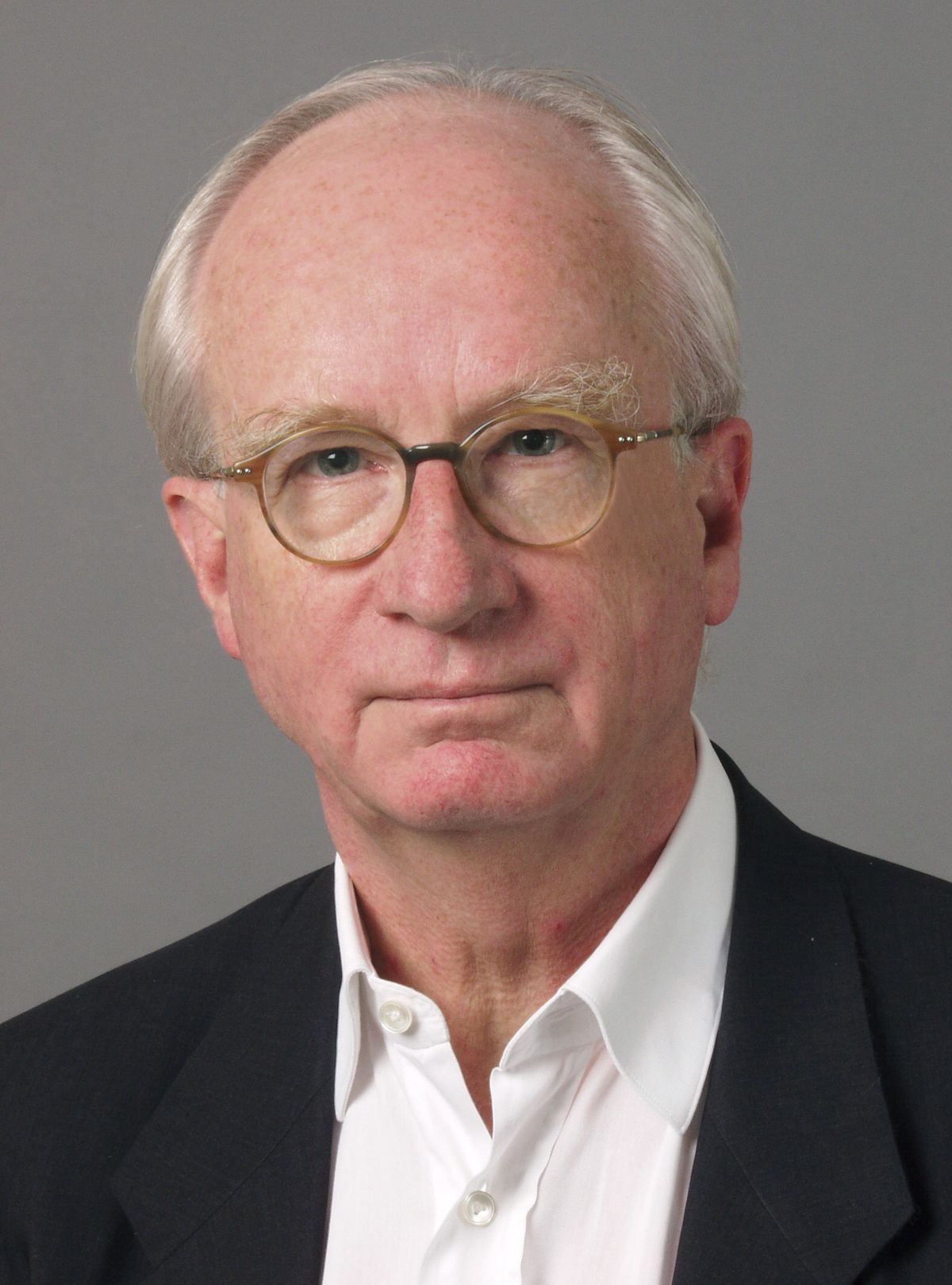
In 1983, Borst moved to the Netherlands Cancer Institute. As a physician, Borst was always interested in medical applications, so he started investigating genes involved with multidrug resistance (MDR) in cancer. He helped decipher the physiologic functions of several ATP-binding cassette (ABC) transporters, which sit in cell membranes and transport compounds out of the cell to contribute to MDR.
One of his notable discoveries was ABCB4, a phosphatidylcholine transferase that is essential for making bile.12 This was an unexpected discovery because at the time, scientists thought that bile salts passively extracted phosphatidylcholine into bile. Borst found that ABCB4 transports phospholipids actively into bile, and that the dysfunction of this transporter gene led to severe liver disease.13
Further studies demonstrated ABCB4’s ability to also transport some drugs.14 Borst discovered that one member of the P-glycoprotein family prevents entry of amphipathic toxins in the gut and the brain, which prevented certain oral medications from being absorbed.15 This insight helped guide strategies for more efficient drug delivery by inhibiting the molecular pump.
Borst next turned to pseudoxanthoma elasticum, an inborn error of calcification due to the absence of ABCC6 in the liver.16 This genetic defect caused calcium to accumulate in the eyes, skin, and blood vessels. Borst found that without functional ABCC6, there is a lack of plasma pyrophosphate, which binds to calcium and prevents calcification. This work guided development of new strategies for overcoming drug resistance and improving therapeutic outcomes.
“If you want to discover new biology, it means that you cannot only do the obvious experiments. You must sometimes be a little more ingenious than the next person. So that means that you sometimes tackle projects that nobody has much faith in, and those projects often lead to real discoveries,” Borst said.
Mentoring students and advocating for science policy
Borst was deeply invested in training and mentoring numerous students, many of whom have gone onto illustrious scientific careers. “That’s the nice aspect of working within science. It’s a combination of new biology and teaching biology. And I did a lot of teaching in my life,” said Borst. “It’s a joint effort to, on one hand, discover new things, and on the other hand, educate people to have useful careers in later life.”
One of his previous graduate students, Titia de Lange, who is now a renowned cell biologist at the Rockefeller University, studied the genetic underpinnings of variant surface glycoproteins in trypanosomes under Borst’s guidance. During her time in Borst’s lab, she noted that he was exceptionally good at dissecting experiments and didn’t hold back from voicing his concerns. His deep commitment to science shone through his actions.
“He is supremely adept at helping people achieve their best. He had endless patience to sit with people and go through their notebooks and look at the details of their experiments so he could help figure out what was going wrong. He never gave up on his trainees even though he was running the Dutch Cancer Center—a huge job,” said de Lange.
Aside from teaching, Borst served as the director of research at the Netherlands Cancer Institute. At the time, the institution suffered from grant cuts, low productivity, and even lower morale. He stepped in to address the problems with some suggested changes. His vision to improve the institute faced stiff opposition. For instance, Borst wanted to eliminate tenure for graduate students because he thought that it locked people into positions that were unsustainable. It was an unpopular stance, but Borst insisted.
This conflict took Borst to court where he appealed to the judges and convinced them that the institute could not function if graduate students worked in permanent jobs. Taking advantage of this momentum, Borst also began to implement other policies. To protect students, he established thesis committees to ensure the timely progression of students’ projects. He also implemented more stringent internal reviews of grant applications before they were submitted to dramatically improve funding success.
Borst played a prominent role in engaging with the government on scientific matters. Funding for basic research paled in comparison to translational research. Borst appealed for more funding for fundamental basic research as a necessity to further exploit new knowledge that can be turned into practical applications.
In addition, Borst firmly supported the need for science communication. He frequently appeared on TV and radio and wrote thought provoking columns in the Nieuwe Rotterdamsche Courant. "Effective communication is an important function of scientists," Borst said.
“It is important to stress the power of science to solve problems,” Borst said. “Our society is so completely dependent on science and technology that springs from that. If we don’t convince people that the scientific method is the way to get at the truth, then we won’t survive as humanity.”
See also “2022 Lasker Award Winners Announced”
References
- Borst P. The malate-aspartate shuttle (Borst cycle): How it started and developed into a major metabolic pathway. IUBMB Life. 2020;72: 2241-2590.
- Borst P, Weissmann C. Replication of viral RNA, 8. Studies on the enzymatic mechanism of replication of MS2 RNA. Proc Natl Acad Sci. 1965;54:982-987.
- Van Bruggen EF, et al. Circular mitochondrial DNA. Biochim Biophys Acta. 1966;119(2):437-439.
- Borst P, Ruttenberg GJ. Renaturation of mitochondrial DNA. Biochim Biophys Acta. 1966;114:645-647.
- Opperdoes FR, Borst P. Localization of nine glycolytic enzymes in a microbody-like organelle in Trypanosoma brucei: the glycosome. FEBS Lett. 1977;80:360-364.
- Hoeijmakers JH, et al. Novel expression-linked copies of the genes for variant surface antigens in trypanosomes. Nature. 1980;284:78-80.
- Bernards A, et al. Activation of trypanosome surface glycoprotein genes involves a duplication-transposition leading to an altered 3' end. Cell. 1981;27:497-505.
- Van der Ploeg LH, et al. RNA splicing is required to make the messenger RNA for a variant surface antigen in trypanosomes. Nucleic Acids Res. 1982;10:3591-3604.
- Van der Ploeg LH, et al. Structure of the growing telomeres of Trypanosomes. Cell. 1984;36:459-468.
- Gommers-Ampt JH, et al. beta-D-glucosyl-hydroxymethyluracil: a novel modified base present in the DNA of the parasitic protozoan T. brucei. Cell. 1993;75:1129-1136.
- van Luenen H, et al. Glucosylated hydroxymethyluracil (DNA base J) prevents transcriptional read-through in Leishmania. Cell. 2012;150(5):909-921.
- Smit JJ, et al. Homozygous disruption of the murine mdr2 P-glycoprotein gene leads to a complete absence of phospholipid from bile and to liver disease. Cell. 1993;75(3):451-462.
- Deleuze JF, et al. Defect of multidrug-resistance 3 gene expression in a subtype of progressive familial intrahepatic cholestasis. Hepatology. 1996;(4):904-908.
- Smith AJ, et al. MDR3 P-glycoprotein, a phosphatidylcholine translocase, transports several cytotoxic drugs and directly interacts with drugs as judged by interference with nucleotide trapping. J Biol Chem. 2000;275(31):23530-23539.
- Schinkel AH, et al. Normal viability and altered pharmacokinetics in mice lacking mdr1-type (drug-transporting) P-glycoproteins. Proc Natl Acad Sci. 1997;94(8):4028-4033.
- Jansen RS, et al. ABCC6-mediated ATP secretion by the liver is the main source of the mineralization inhibitor inorganic pyrophosphate in the systemic circulation-brief report. Arterioscler Thromb Vasc Biol. 2014;34(9):1985-1989.
